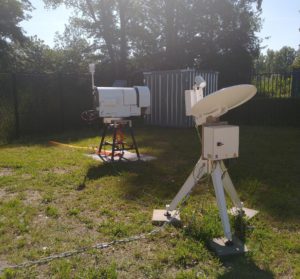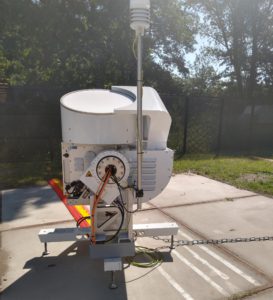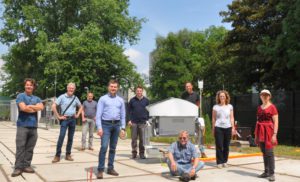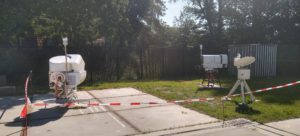The Ruisdael Observatory – named after the 17th century painter Jacob van Ruisdael – is a nationwide observatory for measurements of the atmosphere. A dense network of fixed measuring stations, mobile facilities and comprehensive ground stations provide data on the physical and chemical properties of the atmosphere and its interaction with the earth’s surface. Combined with high-resolution simulations the Ruisdael Observatory is able to model the Dutch atmosphere on a very small scale which enables more concrete, detailed forecasts of weather and air quality.
Ruisdael Observatory is on the national roadmap for large scale research facilities. This programme of the Netherlands Science Organization (NWO) provides a framework for the building of unique research facilities of international allure and significance. Ruisdael is the Dutch contribution to the European ACTRIS (European Research Infrastructure for the observation of Aerosol, Clouds and Trace Gases) and ICOS (Integrated Carbon Observation System) infrastructures.
Long-term greenhouse gas emissions, air pollution and particulate matter have made structural changes to the earth’s atmosphere. The great challenge for the atmospheric sciences is to make short-term, local and detailed forecasts as well as predicting what the atmosphere will look like in the future. Current models work with blocks of a few kilometers in size, whereas most atmospheric phenomena occur at a far smaller scale. To stay away from assumptions about the state of the atmosphere, measure and model these small-scale phenomena is necessary.
The Ruisdael Observatory will produce a simulation of the entire atmosphere of the Netherlands at a resolution of only 100×100 meters, which is much smaller than current models do. This will result in detailed forecasts of weather and air quality. A major advantage of such a detailed national map of ‘Dutch skies’ is that the Netherlands has a huge variety of different sorts of landscape, building, vegetation and weather conditions packed into a relatively small surface area. This means we can learn a wide range of local lessons about weather and climate, lessons which can also be applied internationally.
The mobile cloud profiler platform at The Green Village consists of a mobile cloud radar, a microwave radiometer, a micro rain radar and disdrometers. The instruments provide real time data of (changes in) the atmosphere above TU Delft Campus. The platform will be deployed for use in national and international measurement and calibration campaigns in which the Ruisdael Observatory participates. The measuring equipment will also be accessible for researchers and students working on atmospheric research on TU Delft Campus and will provide a detailed picture of the local weather conditions.
For more information, click here.
Partners
The partners are KNMI, RIVM, UoG, VU, UU, WUR, TNO, TU Delft. The project is partially subsidised by the NWO.









